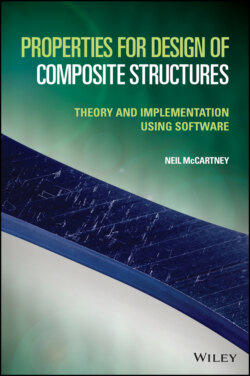Читать книгу Properties for Design of Composite Structures - Neil McCartney - Страница 29
2.13 Strain–Displacement Relations
ОглавлениеFor the special case when the strain tensor εij is uniform, and on using (2.107), the displacement fields
(2.134)
and
(2.135)
both lead to the same strain field given by
(2.136)
This implies that the displacement fields differ by a rigid rotation about some axis. Such a rigid rotation will not affect the values of the strain and stress fields. The form (2.135) for the displacement field is preferred as it is then much easier to describe the meaning of the shear strains ε12, ε13 and ε23. When ε12 is the only non-zero strain component, it follows that u1 is the only non-zero displacement component and that its value is proportional to x2 so that the shear plane is normal to the x2-axis. Similarly, when ε13 is the only non-zero strain component, it again follows that u1 is the only non-zero displacement component and that its value is proportional to x3 so that the shear plane is normal to the x3-axis. When ε23 is the only non-zero strain component, it follows that u2 is the only non-zero displacement component and that its value is proportional to x3 so that the shear plane is again normal to the x3-axis.
When using cylindrical polar coordinates (r,θ,z), the displacement components ur,uθ,uz are related to the Cartesian components u1,u2,u3 as follows
(2.137)
having inverse
(2.138)
and the strain–displacement relations are given by
(2.139)
When using spherical polar coordinates (r,θ,ϕ), the displacement components ur,uθ,uϕ are related to the Cartesian components u1,u2,u3 as follows:
(2.140)
having inverse
(2.141)
and the strain–displacement relations are given by
(2.142)
